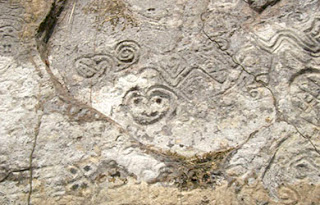Caral considered one of the 10 unforgettable findings of 2015 according to National Geographic. "The Caral is the oldest civilization in the Americas," said Peruvian archaeologist Ruth Shady to this medium. The archaeological team unearthed three complete runs no clay figurines, two heads of the same material and numerous reliefs of starving characters that are an allegory of drought, famine and death he endured this culture.
The disturbing expression of the three statuettes has not faded over the millennia. Most depicts a shaman priestess or showing breasts and genitals. The other two statues, with twenty fingers each, representing two characters in the hierarchy. "Women played a prominent religious, economic and political, as can be evidenced in the recovered material role activities," says Shady. "When the Spanish arrived in Peru they said that the natives were weak because they let women rule"
Caral is the cradle of as old as the Egyptian Memphis Andean civilization and culture that flourished in this holy city is considered the oldest in America, at least to date. Throughout the month of June, the Ministry of Culture of Peru has announced a series of findings about 3,800 years old that shed light on a remote culture that survived in an area hit by drought. The archaeological team led by Ruth Shady has unearthed three complete no clay figurines, two heads of the same material and numerous reliefs of starving characters that are an allegory of drought, famine and death he endured this culture.
Source: National Geographic.
Visit Lima!

















